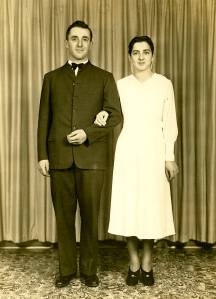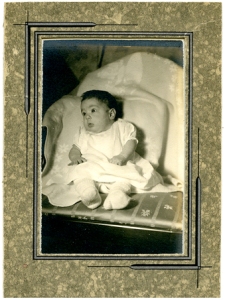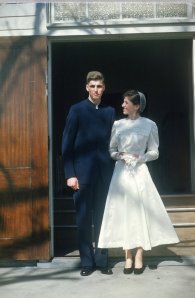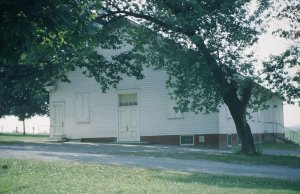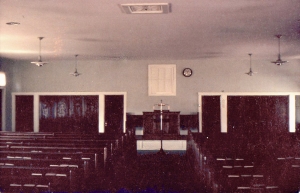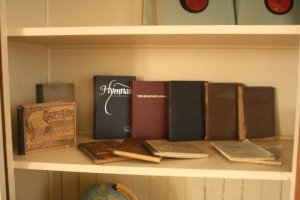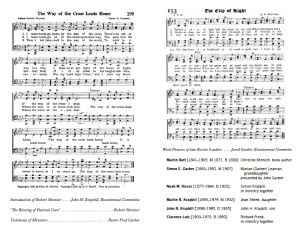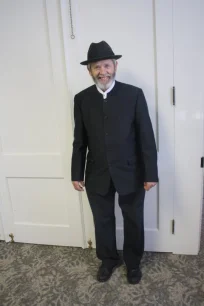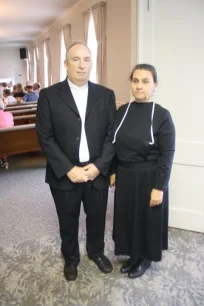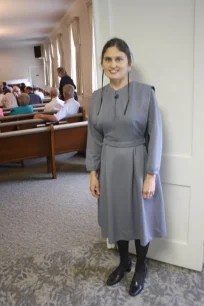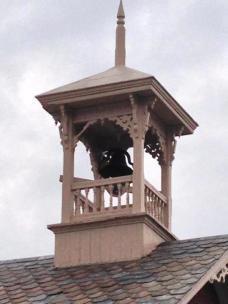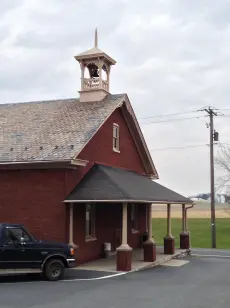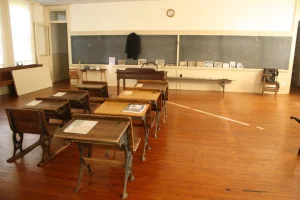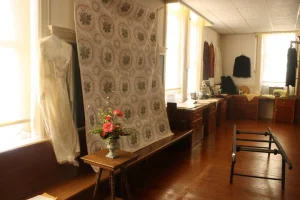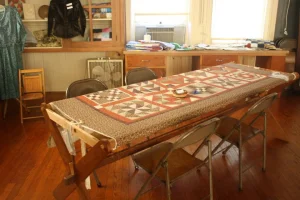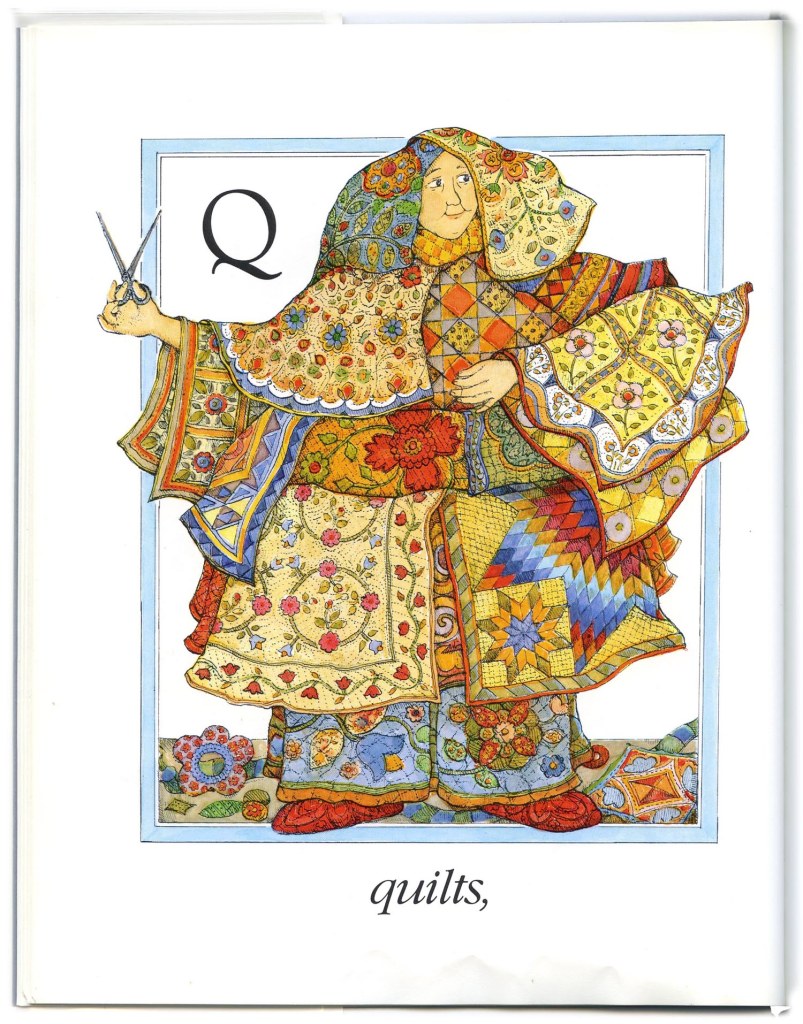
Bossler Mennonite Church was the hub of the Longenecker family’s spiritual life and the school beside it, Washington School, the place where the Women’s Sewing Circle fabricated comforters, baby clothing, blankets and quilts to help clothe the needy of the world. Some of these gorgeous quilts are displayed on a previous blog post. You can see and read about them here.

Even more than quilting I think Mother loved knotting comforters. For her, it was easier to see progress knotting a comforter. She liked the warm fluffy texture, and she could work on it by herself at home.
Last fall, on one of our trips to the attic cleaning out the house after her sudden death, we opened the yellowish, grain-painted blanket chest with turned feet where we knew we would find some of Mother’s prized quilts.
Can you identify the design above? I need help with the name of this pattern please!

Joanne Hess Siegrist, one of my former students at Lancaster Mennonite School, has published a story in photographs from 1855-1935 entitled Mennonite Women of Lancaster County. In this pictorial overview of Mennonite life from this era, Joanne, who can trace her family back eleven generations, depicts the many facets of Mennonite women’s lives in chapters like these: The Tone of Their Lives, Motherhood and Children, Farm Life and Work, Faith and Family Outings.
Here is an excerpt from her chapter entitled “Quilting and the Arts”
At the beginning of the twentieth century, Mennonite women of Lancaster County spent many hours doing elaborate, colorful needlework. Young women worked especially on their dowries.
With a frugality that was part of their spirituality, these women often created handwork out of remnants and half-used materials. They crocheted exquisite lace tablecloths from the cord strings used to tie feed bags. They made hooked rugs using the unworn sections of old winter coats. They designed quilts with fabric from colorful feed bags found in the barn. . . .
In a photo dated 1948, Joanne showcases Anna Huber Good as she adds tiny stitches to a Grape Vine appliqué quilt. Author Siegrist adds, “Anna quilted all her life; in fact, after rearing eight children, she became even more intent on quilting. Anna got up at 4:00 a.m. and quilted until 6 a.m. Then she made a large breakfast for her husband Daniel and sent him off to his market work. After doing a few cleanup chores, Anna returned to quilting. She quilted all day long until about 9:00 p.m., stopping only for meals.”
Anna’s retirement years were even more productive, making “forty-two quilts for her children.” Amazingly, she charged only 15 cents per yard of quilting thread if she quilted for people outside her family.
Here are four friends quilting in the dining room of Enos and Annie Lefever’s home (1915). Their intent expressions (uh-oh, I see one smiling!) and nimble fingers are caught on camera by Annie’s son Harry, whose photography did not interfere with his membership at Mellinger’s Mennonite Church (Mennonite Women of Lancaster County,194). Just a mere ten years earlier, Mennonite farmer, John Kreider Miller, lost his church membership for running a photography studio (The Lancaster Intelligencer Journal, Friday, May 10, 1996). Photographs, apparently, at the turn of the twentieth century, spoke of pride, a cardinal sin in the Mennonite system of values. (Mennonite Women of Lancaster County, Siegrist)
Amish and Mennonite hand-made quilts are now marketed as a luxury item and often used as decorative wall hangings. There are numerous websites advertising such handiwork for thousands of dollars.
Until recently, the Quilt Museum at the People’s Place in Intercourse, PA exhibited cleverly crafted quilts from all over the United States.
The Mennonite Central Committee, providing aid to the world’s forgotten and neglected, often sponsors quilt sales and auctions beyond Lancaster County borders. Here is a link to one in Ohio.
* * *
Buy Joanne’s book here!
Is there quilting in your family history? Has a quilt been bequeathed to you of quilt-essential quality? Are you a quilter?





